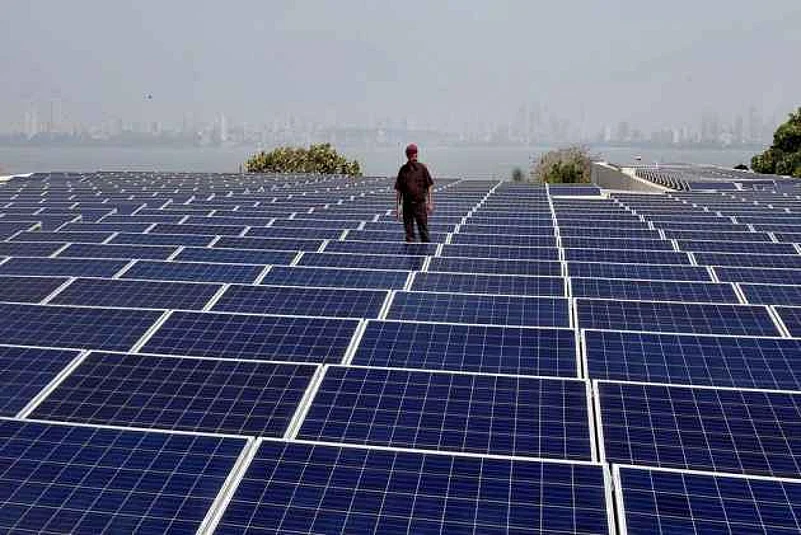India is staring at an energy crisis in the eye today. The government has hiked petrol and diesel prices close to 70 times this year. The coal shortage in the country has forced-shut several thermal power plants. The precarious situation puts a question mark over India’s long-term planning to attain energy sovereignty. It also calls into question not only policy regimes but also the way the government has taxed energy products over the years.
In 2014, when international crude oil prices fell to historic lows of below $30 a barrel, the Centre instead of passing on the benefits to consumers, raised excise on petrol and diesel, milking the situation to its benefit. Between 2014 and 2021, the excise duty on petrol has increased by 247%, while that on diesel, a whopping 794%. As a result, the Centre’s excise collections from petroleum products that grew at a CAGR of just 1.51% between 2010 and 2014, started growing at a compounded rate of 22.5% thereafter.
Lydia Powell, fellow at Observer Research Foundation, in a recent article said, “India ranks low in affordability of petrol, notwithstanding the claims of high subsidies to oil. In 2017-18, a litre of petrol cost about 25% of average daily per capita GDP in India.”
Powell adds that within India, there were large variations in the affordability of petrol. In Bihar, an average person had to spend 94% of daily state domestic product to buy a litre of petrol while in UP it is over 50%. Compare it with our neighbours: In China, this is about 4%, Vietnam 8% and Pakistan 17%.
Interestingly, Surya Sethi, former principal advisor, power and energy with the Indian government, says that while excise duties on petrol products have increased in the last seven years, if one takes into account the overall increase in government’s revenues (including cess, royalty, service tax etc), the overall growth rate will be much less and commensurate with historical increases.
High prices of petroleum products directly contribute to higher retail inflation. High fuel prices also contribute to inflationary pressure on several other sectors, including FMCG, paints, fertiliser and automobiles among others.
Suresh Khosla, secretary of Bombay Goods Transport Association says, “On one hand the government wants to reduce the cost of freight in the country, on another, the massive hike in the price of diesel is making everything expensive. Diesel prices account for 60-70% of the freight cost in India. Higher cost of freight contributes to price rise for products in every sector.”
The cost of security
Achieving energy security requires consistent public and private investments in the sector. In India, though, energy companies are the golden goose that should serve every sector.
Soon after the country’s thermal power plants started shutting operations due to coal shortage, former Coal Secretary, Anil Swarup in a spate of tweets blamed the centre for the country’s ongoing energy crisis. He alleged mismanagement and diversion of funds from Coal India’s cash flows towards the government’s flagship programmes like Swachh Bharat Mission.
“Are you aware Coal India Limited had reserves of in excess of Rs 40,000 cr in 2015. Now around Rs 10,000 cr...was trading at Rs 400 in 2016. Now below Rs 200...was kept without regular CMD for a year...was pushed to invest in fertilizer plants... managers were asked to monitor school toilets,” Swarup tweeted earlier last month.
Swarup’s criticism of government policies echoes with the criticism against the Centre for diverting coal cess collections to meet revenue shortfall under GST. In 2018, the government diverted 65% of the funds collected through coal cess to clear its indirect tax dues to state governments. The purpose of cess is to spend money on the activities that it’s meant for. Questions have been asked why this is not followed by the Indian government and the consistent high cost of fuel in the country is causing macroeconomic disruptions.
Is it doomsday yet?
Hetal Gandhi, director at CRISIL Research offers a not so negative view. “We believe that there would be an incremental increase in the production of oil and gas from the new fields that are coming up, but the ratio would be tilted towards integrated petrochemical plants. As far as fuel demand is concerned, we believe that it will stabilise on the back of blended fuel till 2025.” She is also betting on higher EV usage to taper demand for petrol while diesel demand will go up incrementally with staggered adoption of new fuel options.
Can it be safely accepted that India is nowhere close to achieving energy security even in the next decade? In years when energy prices shoot up in international markets, the incumbent prime minister can just sigh and say: “this too shall pass.”
















